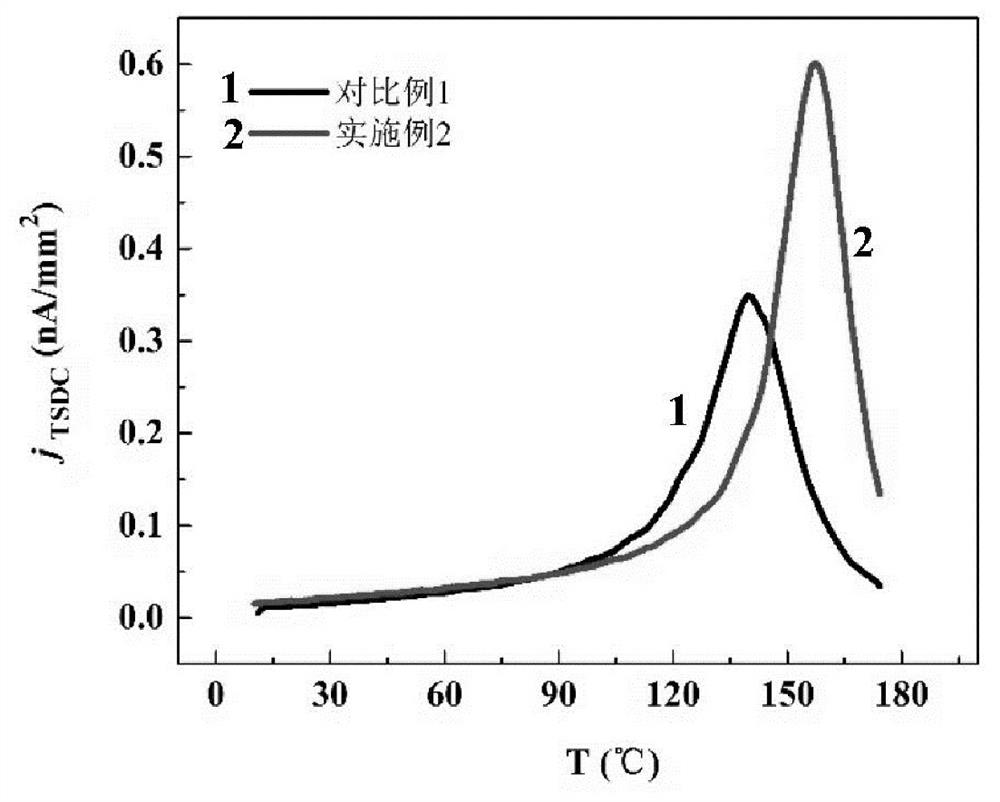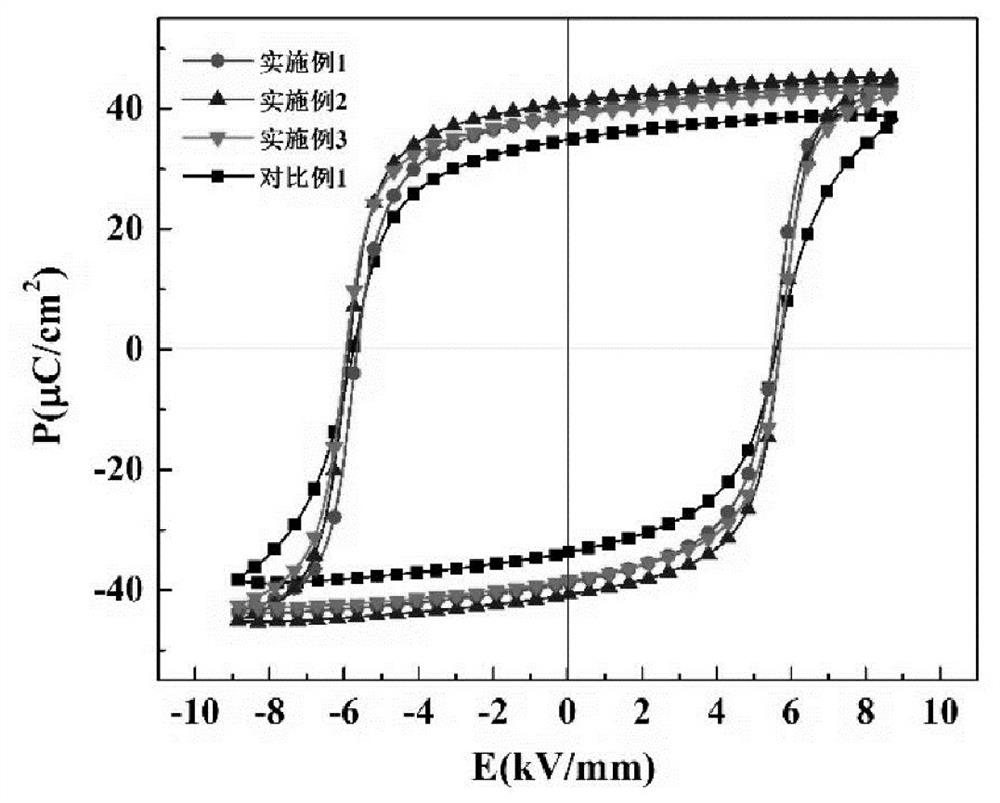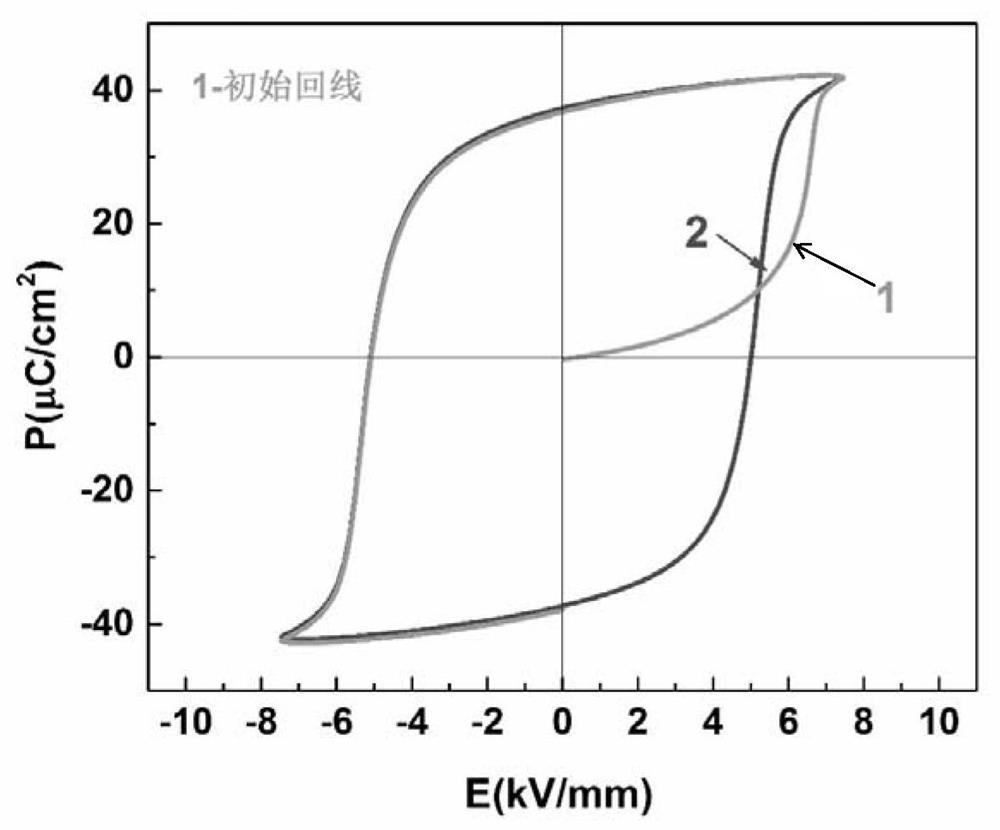A kind of manganese-doped bnt-ba lead-free ferroelectric ceramic material and preparation method thereof
A technology of BNT-BA and ferroelectric ceramics, applied in the field of functional materials, can solve problems such as the reduction of polarization strength, and achieve the effect of excellent comprehensive electrical properties
- Summary
- Abstract
- Description
- Claims
- Application Information
AI Technical Summary
Problems solved by technology
Method used
Image
Examples
Embodiment 1
[0039] Embodiment 1: the composition of material is 0.96Bi 0.5 Na 0.5 (Ti 0.997 mn 0.003 )O 3 -0.04BiAlO 3
[0040] By Bi 2 o 3 , NaHCO 3 、TiO 2 、Al 2 o 3 , MnCO 3 Powder as raw material, according to 0.96Bi 0.5 Na 0.5 (Ti 1-x mn x )O 3 -0.04BiAlO 3 The stoichiometric ratio is prepared, mixed by wet ball milling, and mixed for 24 hours according to the mass ratio of raw materials: balls: alcohol = 1:2:0.8, so that the components are mixed evenly. After drying, pass through a 40-mesh sieve, press into large pieces under a pressure of 5MPa, raise the temperature to 850°C at a rate not higher than 2°C / min, and keep it warm for 2 hours to synthesize 0.96Bi 0.5 Na 0.5 (Ti 0.997 mn 0.003 )O 3 -0.04BiAlO 3 of ceramic powder.
[0041] The ceramic powder in step (1) is ground and passed through a 40-mesh sieve. Then mix according to the wet ball milling method, finely grind for 24 hours according to the mass ratio of raw material:ball:alcohol=1:2:0.6, and dry t...
Embodiment 2
[0047] Embodiment 2: the composition of material is 0.96Bi 0.5 Na 0.5 (Ti 0.993 mn 0.007 )O 3 -0.04BiAlO 3
[0048] Repeat the preparation method of Example 1 by the above-mentioned formula.
[0049] The hysteresis loop was tested at room temperature for the ceramic material in Example 2, and the results are shown in Table 1.
[0050] The ceramic material of present embodiment 2 is carried out the measurement of hysteresis loop under different temperatures, and the results are shown in figure 2 , it can be seen that the hysteresis loop of the material at 160°C exhibits typical ferroelectric properties. As the temperature continues to rise, the FE-AFE phase transition occurs at 175°C, and the hysteresis loop appears a waist phenomenon. image 3 It is the variation of the remanent polarization intensity obtained from the temperature-variable hysteresis loop in Example 2 with temperature. It can be seen that the Pr of the material can reach 30 μC / cm at 160 ° C 2 .
[00...
Embodiment 3
[0052] Embodiment 3: the composition of material is 0.96Bi 0.5 Na 0.5 (Ti 0.980 mn 0.010 )O 3 -0.04BiAlO 3 i.e. x=1.0%
[0053] Repeat the preparation method of Example 1 by the above-mentioned formula.
[0054] The ceramic material of present embodiment 3 is carried out the test of hysteresis loop under room temperature, and the results are shown in Table 1 and Figure 5 . It can be seen that the remnant polarization (P r ) is 38μC / cm 2 .
[0055] The main test results of embodiment 1, embodiment 2, embodiment 3, comparative example 1 have been listed respectively in table 1;
[0056] Table 1 Remanent polarization strength and test conditions of ceramic materials at room temperature
[0057]
PUM
| Property | Measurement | Unit |
|---|---|---|
| remanent polarization | aaaaa | aaaaa |
| remanent polarization | aaaaa | aaaaa |
| phase transition temperature | aaaaa | aaaaa |
Abstract
Description
Claims
Application Information
 Login to View More
Login to View More - R&D
- Intellectual Property
- Life Sciences
- Materials
- Tech Scout
- Unparalleled Data Quality
- Higher Quality Content
- 60% Fewer Hallucinations
Browse by: Latest US Patents, China's latest patents, Technical Efficacy Thesaurus, Application Domain, Technology Topic, Popular Technical Reports.
© 2025 PatSnap. All rights reserved.Legal|Privacy policy|Modern Slavery Act Transparency Statement|Sitemap|About US| Contact US: help@patsnap.com



